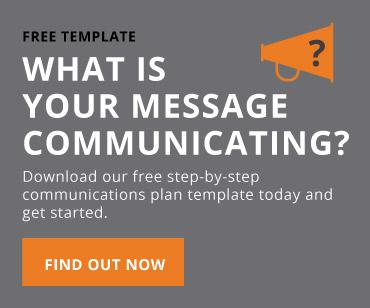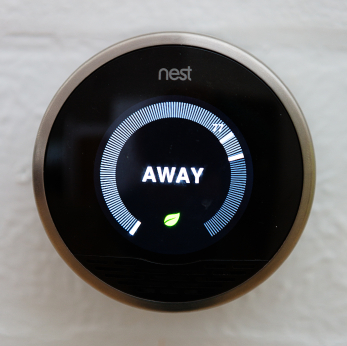 Effective doctor-patient communication increases compliance with prescribed treatments, generates goodwill and trust, and can even reduce complaints and malpractice claims.
Effective doctor-patient communication increases compliance with prescribed treatments, generates goodwill and trust, and can even reduce complaints and malpractice claims.
Physicians are notoriously busy sorts. There was a time not too long ago when many were so bogged down with paperwork that patient relationships suffered. These days, electronic health records (EHRs) are helping immensely, saving time and effort for both doctors and their support staff as patient data is entered, stored and easily shared between facilities.
With all this extra time on their hands, doctors can now focus more on patients, whether it’s through additional face time, increased monitoring of diagnosed issues or even extra research and collaboration on more puzzling patient health conditions.
To facilitate productive doctor-patient communication, startups across the country are developing solutions to the various issues faced by physicians in their efforts to provide the best care possible.
Headquartered in San Francisco, Ringadoc has just secured a new round of funding to help it expand its patient phone call management platform. This cloud-based service allows patients to call in with health questions outside of normal business hours. Previously this was usually handled by answering services and untrained operators who would simply refer an on-duty doctor to talk to the caller, often requiring patients to describe their symptoms multiple times. With Ringadoc, patients record a message once and are then automatically transferred to an appropriate physician. Upcoming new features will involve call recording and transcriptions that can be provided both to patients for reference and for entry into EHRs.
Nhumi Technologies is another tech company working to improve doctor-patient communication. The team behind it had previously developed a “Google Earth for the human body” and is now putting it to good use as a 3D avatar to visualize a patient’s EHR. Patients can show their physicians exactly where they are hurting, and doctors can describe in more detail exactly what is happening within the patient’s body, whether it is a potentially adverse drug reaction or just revealing which muscles need to be strengthened through physical therapy to prevent recurring pain. The HealthCorpus, as they are calling it, even goes one step further and allows images to be sent home with patients, either physically or via email.
New York-based PingMD is expanding its offerings as well. Originally an app that allowed parents to easily get in touch with their children’s pediatricians, they are now broadening their scope to allow doctors to securely communicate with both patients and peers. With a fresh investment of $2.5 million, the software-as-a-service company will be able to connect general practitioners to their patients with text messages, voice calls, photos and videos who can then loop in nurses or other specialist doctors to consult on the issue. PingMD drastically reduces the response time for patient questions too, with physicians often able to respond in less than an hour. Other secure communications, such as email and other secure messaging systems, have typical response times of up to 72 hours.
Want to stay up to date on the latest stories affecting healthcare and technology?
In the news:
Ringadoc raises $700k to move closer to the frontline of virtual health care
Can Avatars Help Close the Doctor-Patient Communication Gap?
With $2.5 million in new funding, PingMD wants to help doctors manage incoming calls



 Marketing communications have been challenging business owners, startup founders, entrepreneurs and marketing directors alike since the term was dreamed up decades ago. Who to target, how to do so as well as when and where to do it are all critical questions that must be answered before beginning any outreach campaign.
Marketing communications have been challenging business owners, startup founders, entrepreneurs and marketing directors alike since the term was dreamed up decades ago. Who to target, how to do so as well as when and where to do it are all critical questions that must be answered before beginning any outreach campaign.


 Strategic Communications Plans are designed to serve as unified platform on how your brand represents itself internally, externally and around the world. They can be used for both entire organizations and for specific campaigns (such as product launches or informational outreach).
Strategic Communications Plans are designed to serve as unified platform on how your brand represents itself internally, externally and around the world. They can be used for both entire organizations and for specific campaigns (such as product launches or informational outreach).

 With Earth Day right around the corner, thoughts turn to making the planet a greener place for everyone. Many businesses already implement
With Earth Day right around the corner, thoughts turn to making the planet a greener place for everyone. Many businesses already implement  Access to care is critical in today’s world. Being able to contact a doctor, whether over the phone, online or in person is something that everyone should be able to do when needed. One of the more rapidly growing areas to increase access to care is the field of telemedicine, or virtual doctor’s visits that can be used to evaluate symptoms, check vital signs and even observe a patient’s mental health.
Access to care is critical in today’s world. Being able to contact a doctor, whether over the phone, online or in person is something that everyone should be able to do when needed. One of the more rapidly growing areas to increase access to care is the field of telemedicine, or virtual doctor’s visits that can be used to evaluate symptoms, check vital signs and even observe a patient’s mental health.

 To help your next presentation stand out from the pack and keep your audience entertained and engaged, we’ve put together a list of some of the newest software tools available for your next business presentation or matchmaking event.
To help your next presentation stand out from the pack and keep your audience entertained and engaged, we’ve put together a list of some of the newest software tools available for your next business presentation or matchmaking event. You’ve just launched a new green product and want to start promoting it to potential customers, media outlets and business partners. In many ways, promoting this sustainable offering differs little from how you would market anything else your company makes. However there are some key differences to keep in mind.
You’ve just launched a new green product and want to start promoting it to potential customers, media outlets and business partners. In many ways, promoting this sustainable offering differs little from how you would market anything else your company makes. However there are some key differences to keep in mind.